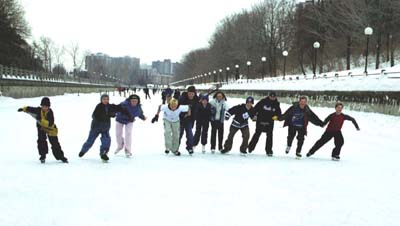Destination Canada: November 17, 2004
Ottawa: Grace, Dignity, and a Delightful State of Affairs
This webpage is a Talkin' Travel post-broadcast resource service for the listeners of the show. If you heard the segment on Canada's national capital — Ottawa — or are interested in travelling here, the information and links given below will help you plan an itinerary.
Destination Canada is a regular feature of Talkin' Travel, WTMY Sarasota, Florida.
(Unless otherwise indicated, all images are courtesy of the Ottawa Tourism and Convention Authority.)
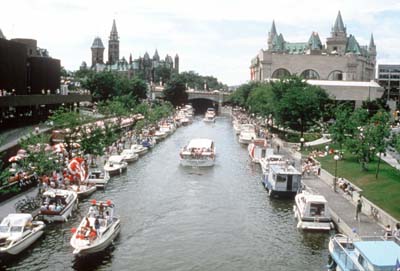
Musing in Ottawa
Whenever I get the opportunity to stroll through Ottawa — along the tidy Rideau Canal; past the imposing Parliament Buildings where the affairs of state are duly conducted (often vociferously); close to official residences and embassies; across abundant green spaces; next to familiar effigies, monuments, and other buildings of national, international, and constitutional significance; through gaggles of students on awesome field trips; in and out of public spectacles flush with pomp and pageantry (or orderly but nonetheless passionate demonstrations) on "The Hill"; or along the banks of the vigorous Ottawa River with the dreamy Gatineau hills beyond — I find myself thinking about the nature of the state.
Oh don't get me wrong. I don't mean to suggest that I am immersed in the deep thoughts of a social scientist, poli-sci student, or political philosopher who is ruminating about that broad and elusive notion called "the state" — it's usually too nice a day for that.
However, the composed and decorous ambiance of this capital city does elicit deeper thoughts than "Where shall I have lunch?" The sights, sounds, and sensations of Ottawa do indeed get one thinking: "What is this country all about? Who are Canadians as a people? What are Canadian values, principles, and attitudes? Do we as Canadians really behave differently from anyone else?"
I must admit that as I take it all in again, I also wonder from time to time what non-Canadians must think when they visit our nation's capital.
Imagine Ottawa: the why and the wherefore
As you too stroll about the city of Ottawa and in the towns and countryside of the Capital Region, the geography and strategic location of Ottawa will provide a clear context for understanding this very distinct national capital.
Ottawa — or in French Outaouais — is presumed to come from the native people of the same name for whom the river was the principal fur-trading highway to the east, especially to the great centre of Montréal. More than 1200 kilometres in length, this formidable river drains an area of more than 140,000 square kilometres, and is the second longest in Canada (after the St. Lawrence) to flow to the Atlantic. It is also the river that gave birth to the ancient Algonquin First Nations people who lived and thrived along its banks. So when you walk along the Ottawa's banks you are also following ancient footpaths and portage trails. If you take a pleasure cruise on the river, try to visualize a profusion of birchbark canoes coming and going with rich furs for rich European traders.
Although the Algonquin were the principal inhabitants of the Ottawa Valley, it was the Ottawa who became the main traders on this watery route when the French — led of course by the "Father of New France" Samuel de Champlain — followed the river upstream and to the west. Still searching for that elusive route to the Orient, Champlain and company did discover with the help of the aboriginal people a route (from the Ottawa through Lake Nipissing, in what today is northern Ontario, and the French River) to Lake Huron. Thus, they penetrated even further into the heart of the continent thanks to the lordly Ottawa river that the Algonquins called Kitchesippi (the Great River). And eventually they completed a loop, a great circular trade route from the Ottawa Valley to the Great Lakes and back eastward again to Montréal and ultimately to Europe. This was the primary ways and means of the commercial empire the French built; an empire over which the two major European powers would struggle for dominance. And what we know today as the city of Ottawa was at the epicentre of this empire.
Initially the empire was all about furs but eventually — once England wrested control of Canada from France — it would also be about the timber trade. New empires and lumber barons in the 19th century would use the Kitchesippi as the chief artery of their trade, shipping timber to Britain.
So today as you sail, kayak, or cruise your way along this beautiful river, imagine the industry it gave birth to. Picture the countless flotillas of logs assembled in massive rafts that were then floated down these fast-moving waters, disassembled and reformed in order to be transported over and around rapids; log rafts so big that the drivers and lumberjacks actually lived on them. And this early North American forestry industry led to some of the largest milling operations in the world, expedited by the Ottawa's many rushing tributaries, falls, and rapids. Today the latter entertain and inspire residents and visitors to the area; creating a different kind of energy.
What we know today as the city of Ottawa was a byproduct of the War of 1812, the only time that foreign troops occupied Canadian territory. Please bear in mind however that this was not a conflict between Canada and the U.S.; the struggle was between the U.S. and Britain. Because Canada was still a colony, it got caught in the middle. And when that war ended, Britain saw the need to create new defensive structures. Therefore in 1826 the Royal Engineers, under the leadership of Lieutenant-Colonel John By, established a construction camp where Ottawa now stands (Bytown) in order to build the 202-kilometre long Rideau Canal, which links the Ottawa River to Lake Ontario. This canal was conceived as an alternative route between Kingston (loyalist country precariously close to the U.S. border) and Montréal — in the event of renewed hostilities. A tremendous feat of civil engineering, the canal was never used for direct military purposes and as time passed, it even became less and less viable as an inland shipping route. Today the Rideau Canal is one of the most beautiful man-made inland waterways in the world. And among the other amenities it offers, the Rideau Canal is also the longest skating rink in the world (in winter only of course).
With the building of the Grand Trunk Railway in the mid-19th century (and links to U.S. railways), Ottawa became a serious candidate for capital city of the new Dominion of Canada which would come into existence on July 1, 1867. But other burgeoning municipalities in Upper Canada were in serious contention for the honour. And it was Queen Victoria (the "Grandmother of Europe" who was busy creating progeny to marry off to European royal families) who, as Monarch,was called upon to make the choice. Her colonial advisors and officials pressed the case for Ottawa and on December 31, 1857, she gave the nod to Ottawa as the capital-to-be of her North American colony.
(As a "central character" in the Canadian historical narrative, Ottawa embodies Canada in many ways. For a brief overview of this nation's history, you may wish to read The Grand Theatre of Canadian History.)
Tangible traditions and the stuff of state
Canadians travel to Ottawa to have a good time, and to learn about themselves. It is certainly one of the best cities in Canada for "experiential learning"; and for foreign visitors it is especially well-equipped and laid out for these purposes. All the major attractions are either within walking distance or accessible by safe and secure public transit. Ottawa is the perfect example of a "lifelong learning" destination, an increasing priority among travellers today — especially the baby boom generation who are having a second conceptual look at life.
If you wish to get a greater understanding of the political and social history of Canada, Ottawa is the perfect field trip — for any age.
For example:
- If you want to learn about the Canadian Parliament, take a tour.
- If you want to know why the Governor-General is the representative of the Head of State, check out the Rideau Hall website and be sure to include this in your walking tour. (By the way the Canadian Head of State is Queen Elizabeth of Canada. As titular head of the British Commonwealth (an international organization that still has considerable social, economic, and political advantages) she is Queen of the various Commonwealth countries quite separately — royal multi-tasking.
- The official residence of the Prime Minister (the Head of Government) is 24 Sussex Drive.
- The Royal Canadian Mounted Police (RCMP) was a key force in opening Canada's west and today is the national law enforcement agency with an important history. The Mounties musical ride is always a delightful show. (It may get you humming a tune from Rose Marie.)
- The Supreme Court of Canada is of course a fundamental institution in Canada. It rules on questions that have a great impact on the Canadian way of life. For example, as Canadian provinces continue to legitimize same-sex marriages, the federal government — which introduced draft legislation to change the definition of marriage to include the unions of same-sex couples — has also asked the Supreme Court to rule on the constitutionality of the proposed legislation. The Supreme Court building itself is an example of the classic, elegant architecture to be found in Ottawa. Public tours are available.
For more suggestions consult the Capital Attractions webpage.
National sentiments
Like most national capitals, Ottawa is the principal stage for celebrating nation-building historic events and for honouring all those who have made great contributions to Canada — or great sacrifices.
For Canadians, Ottawa signifies the unifying (although frequently contentious) seat of power where momentous legislation and decisions are made, where national promises and aspirations are enacted, where our cultural values are enshrined. It is the venue for the playing out of great national events as well as the formal commemoration of some of the most poignant and significant moments in the life of this nation.
Wars, unfortunately, have frequently defined the character of this nation even though Canada is known as a peacekeeping nation. It was our Prime Minister Lester B. Pearson who as Canada's Minister of External Affairs conceived of the UN Peacekeeping Force. When the Suez Crisis threatened to destabilize that critical area and possibly result in another world war, Pearson proposed a United Nations Emergency Force to counterbalance the threat; he also offered Canadian troops to serve. Pearson succeeded in getting the UN to adopt his bold proposal which restored order to the region and established a new role for the UN. For his efforts, he received the Nobel Peace Prize in 1957.
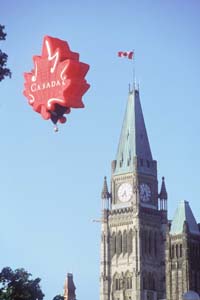
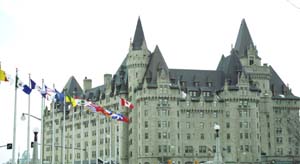
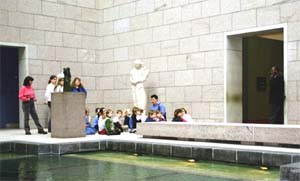
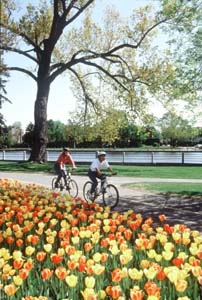
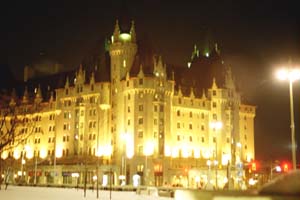
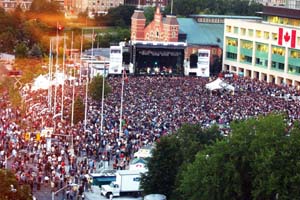
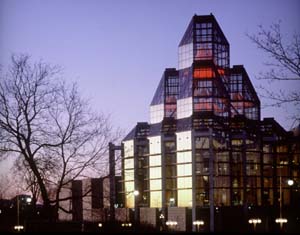
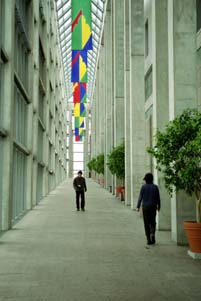
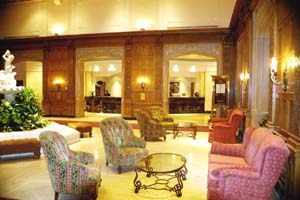
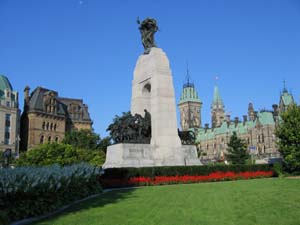

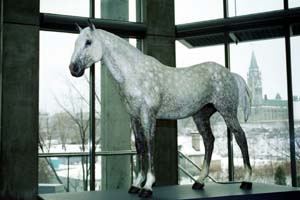
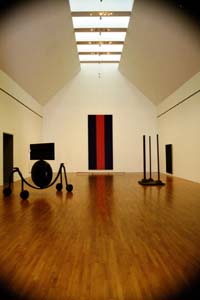
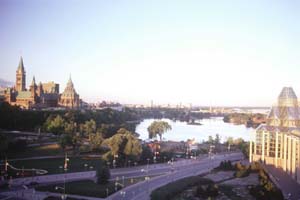
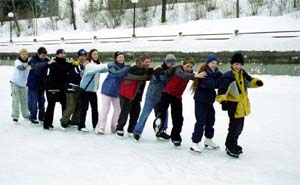
Coming of age
The First World War is regarded as a watershed moment for Canada during which it became a full member in its own right of the international community. This war especially transformed our nation, culture, economy, and identity. In Canada, Vimy Ridge has the same national resonance as Gallipoli does for Australia and New Zealand.
One of the most dramatic sites in Ottawa, especially on Remembrance Day (November 11), is the National War Memorial — just a few steps from Parliament Hill. And the Tomb of the Unknown Soldier, inaugurated in recent years thus completing the memorial, makes a universal statement.
The article "An Unknown Soldier" was written after a visit to Ottawa in search of a family member who was killed in the First World War.
A world-class arts capital
As a national capital, Ottawa is an archive unto itself. Museums, art galleries, theatre, music, architectural centrepieces (of all kinds and eras) are to be found within the core of the city, most within walking distance.
The Ottawa Symphony, The National Gallery of Canada, the Bytown Museum, the Canadian Museum of Contemporary Photography, the Museum of Civilization, and the National Arts Centre are just a few examples.
Ottawa is also a city of festivals including: Canada Dance Festival, Canadian Tulip Festival, Central Canada, Exhibition Association, Cisco Systems Ottawa Bluesfest, Hellenic Community of Ottawa-Greekfest, National Capital Race Weekend, Ottawa Chamber Music Festival, Ottawa Festival Network, Ottawa International Jazz Festival, Winterlude.
Two of my favourite cultural institutions are the National Gallery of Canada (stupendous architecture and a collection that is of international importance) and the Canadian Museum of Civilization. The latter is actually in Hull on the Québec side of the Ottawa River (more evidence of Ottawa's strategic location). The former hosts travelling exhibitions that are often seen only in a few cities on this continent. An example is the upcoming Leonardo, Michelangelo and the Renaissance in Florence exhibit.
Generic experiences
The Canadian Museum of Civilization is a unique institution that is also one of the finest examples of the new world of interactive museums dedicated to exploring the diversity and commonality of human civilization. The article "Out of the Bogs at the Canadian Museum of Civilization" was written after a visit to this museum. The exhibit was an example of the universal and human significance of such travelling exhibits.
Special times in Ottawa
Ottawa is a city for all seasons. Click here for a full calendar of events The following are especially noteworthy and enjoyable events in Canada's capital city.
- Tulip Festival,
- Winterlude,
- Ottawa Doors Open,
- the Grand Opening of the new Canada War Museum,
- Canada Day and Canada's 138th birthday,
- Changing of the Guard on Parliament Hill,
- Sound and Light Show on Parliament Hill,
- Ottawa Fringe Festival,
- Ottawa International Chamber Music Festival
- Bytown Days.
Out and about from Ottawa
Ottawa is also a "hub city." There are many excursions that can be planned using Ottawa as your home base. And each of these recommended secondary destinations will give you an even broader perspective on the state of affairs in Canada.
The Outaouais region and the Gatineau Hills; The Laurentians; Montréal: Francophone Festival City and Paris of North America (Destination Canada, July 21, 2004); Kingston; Upper Canada Village.
Those in the know
Local residents are often the best resource for a destination. Here's what friends in Ottawa have to say about the city.
"We really like to do the antique shows and think they have great appeal to Americans because the prices are so great."
"There is a popular Ottawa painter who has painted many Ottawa sites. His name is Ben Babelowsky He's worth checking out."
"We have always said that the one of best things about Ottawa is its proximity to Montreal."
"We re-discovered the Hill this summer when our son was visiting with his girlfriend. We spent the whole day there … many things to do … the Famous Five is a great photo op. [Known as the "Famous Five," they were a group of women who won the right for women to be recognized as "persons" under the law when Canada's Supreme Court said women couldn't sit in the Senate because constitutionally, they weren't considered people. They took their fight all the way to the British government and on Oct. 18, 1929, they won. Their achievement is commemorated with a bronze monument on Parliament Hill.]
"The best things about Ottawa are the cordon bleu restaurant La Signature and the wonderful scenery. And if you cross over the bridge, there is of course the Lac Leamy Casino with its excellent restaurant."
"The Chamber Music Festival in July … the excellent skiing facilities in the winter ... the tulip festival in the spring and the great bicycle paths…"
"The most unique experiences in the Ottawa area would be a hike in the Gatineau Hills in mid-October when the leaves are at their most spectacular, a trip to Winterlude in February (bundle up!) to see ice sculptures, skaters and other events on the Rideau Canal, the world's longest natural skating rink, or a visit to the Tulip Festival in May. Visitors should also see the Museum of Civilization, the National Gallery, the Parliament Buildings and the Byward Market area, and take in a play or concert at the National Arts Centre."
"There are many beautiful and interesting churches in Ottawa. One almost unknown "gem" is the Chapel of the Bruyère Convent, 25, rue Bruyère (attached to the Bruyère Hospital). It's actually very large ... holds 950 people ... is much bigger than what we usually think of as a "chapel". It was built in 1935-36 in French Gothic style. Ask at the reception desk at 9, rue Bruyère for hours when it is open. It would be worth going to a Saturday or Sunday mass just to see the place ... or attend one of the concerts presented there occasionally."
"As a university student here, what I like about Ottawa is Ottawa at night, when it doesn't pay you any mind. It is a quiet city. And when I walk home from work at eleven o'clock at night, all is shut down on the Hill. I walk past the silent monuments and empty buildings still looming large. For me their symbolic value in daylight is totally altered by the fall of darkness; they become a mythical landscape. I feel free. At this time of night I don't reflect on any broader historical or social perspective of the place where I am, but instead I reinvent it, project onto the path a personal sense of wonder, an intimate encounter with the sublime in the still quiet of downtown Ottawa at night. This is not the feeling in other cities I have known where there is always something to scan, to be aware off, to be on guard against. This is the environment I think that The Haunted Walk of Ottawa draws on, which by the way, is an excellent way to experience Ottawa at night. A lantern-bearing guide takes you around downtown Ottawa to various sites reputed to be haunted. The stories are factual and based on actual testimonies. There is no attempt to spook the spectator, only to explore local myths in Ottawa."
Essential links to get you going ... to Ottawa
I recommend the following:
Oh my gosh! I almost forgot to mention the Château Laurier.
You do not want to miss this.
The Château is as centrepiece of Canada's national capital. As part of the Fairmont Hotels and Resorts chain (formerly Canadian Pacific Railway hotels) it is an elegant structure that manages to communicate opulence, dignity, charm, history, and continuity without appearing self-indulgent or excessive. Like so many in the Fairmont chain, it is in many ways a public venue where guests, locals, and tourists mingle. At the same time, it is where visiting royalty, celebrities, heads of state, and high-ranking politicians stay and work. There are many stories in the Château Laurier. If you can find it, the book Meet Me At the Château by Joan Rankin is a terrific read. The book tells the inside story of a hotel in which Canadian political and social history are part of the amenities. Often referred to as "the gateway to the nation's capital," the Château is at the heart of this elegant capital city and within walking distance of Parliament, key historical sites, and some of the most important art galleries and museums in Canada.
For more information, see the Destination Canada report Châteaux in Canada: the Great Railway Hotels and scroll down to the Château Laurier link. Also, "Life in A Canadian Château" at then end of that webpage will tell you more about this unique property.
Meet you at the Château!
